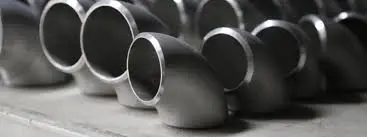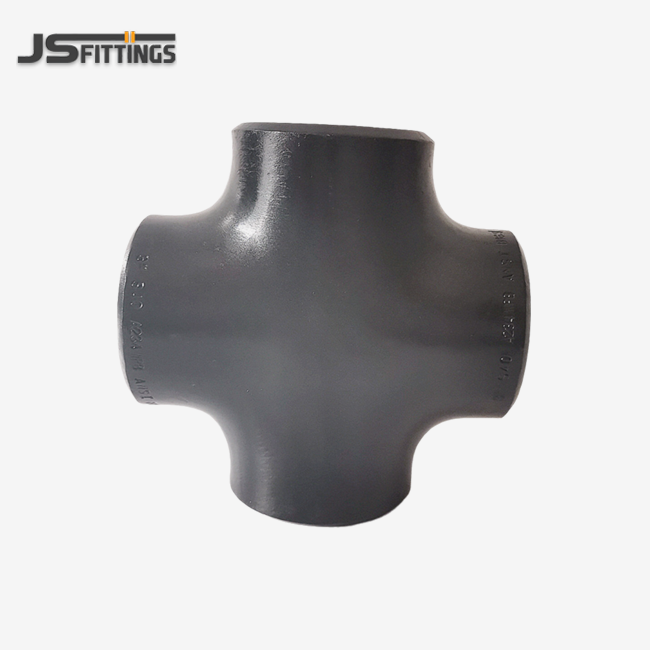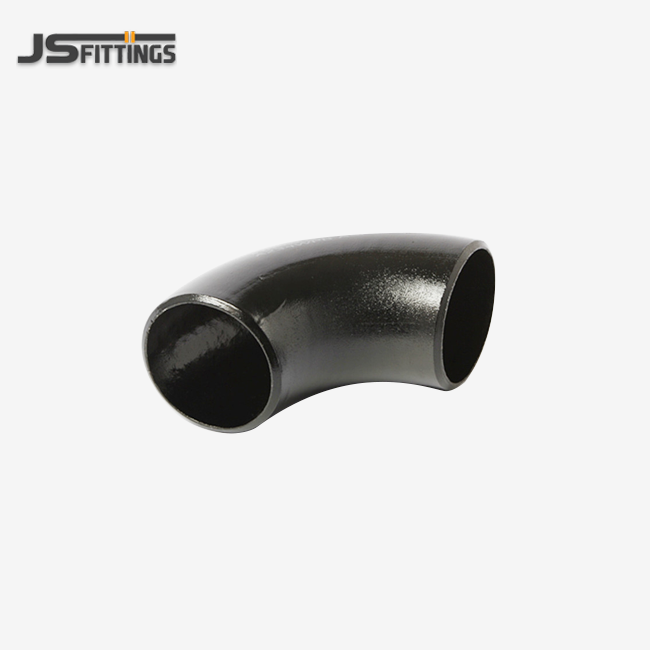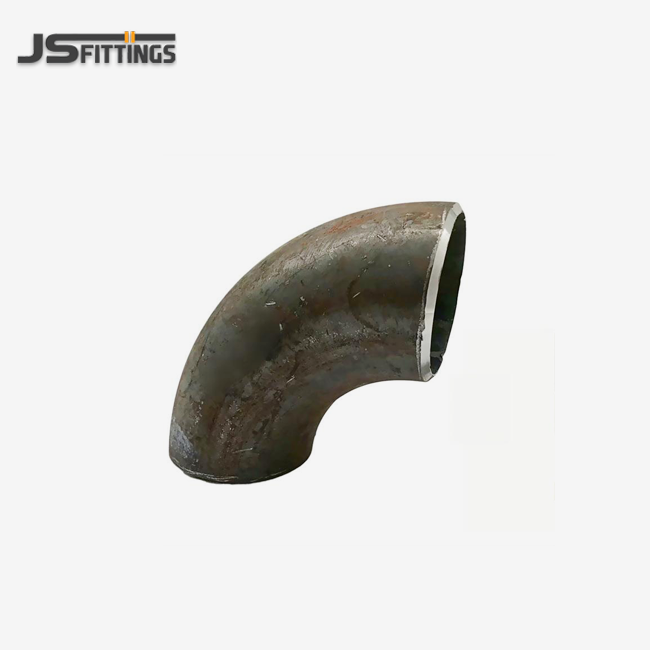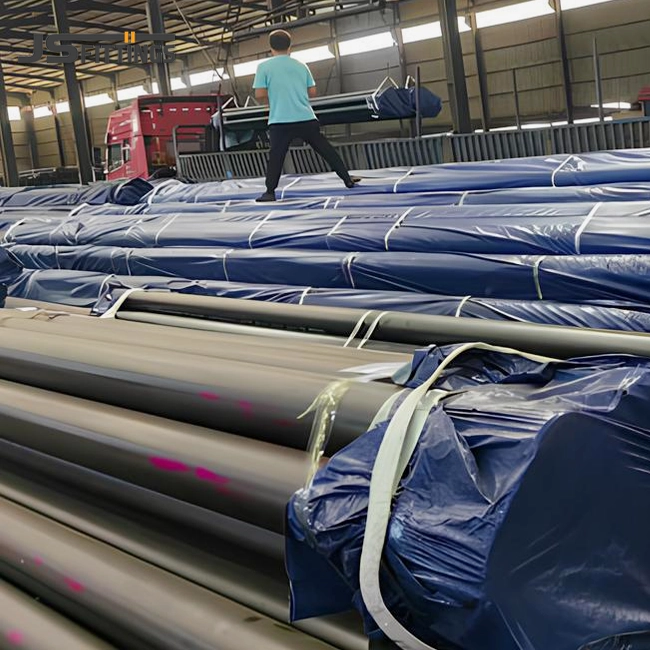What factors determine choosing 45° versus 90° elbows?
Selecting between 45° and 90° butt weld elbows involves considering several critical factors that can significantly influence your project's success. Let's explore these key determinants:
System Flow Characteristics
The type of fluid or gas that is moving through your pipes is very important when choosing an elbow. When there are fast or rough flows, 45-degree butt weld bends can help make the shift easier, which can help lower pressure drop and lower the risk of erosion. For systems with lower flow rates or less important flow features, 90° bends might work fine without having a big effect on performance.
Spatial Constraints
A big thing to think about is how much room you have in your building or on the job site. 90° elbows are a small answer for places that are tight on room because they let you make quick changes in direction in small spaces. 45-degree butt weld elbows, on the other hand, take up more room along the length of the pipe but change directions more slowly, which can be helpful in some plans or when working with bigger pipe sizes.
Pressure Drop Considerations
A lot of the time, keeping system performance up means minimizing pressure drop. When it comes to systems where keeping pressure is important, 45° elbows are better than 90° elbows because they cause less pressure drop. With this feature, you may not need to pump as much and use less energy generally in your pipe network.
Material and Fabrication Costs
A 45° elbow might cost more at first than a 90° elbow, but the total cost of the job should be looked at. Using 45° angles in systems may save energy and last longer, which can make up for the higher cost at first. You should also think about how hard it will be to make and put the product when making your choice.
Space constraints, installation cost and elbow angle trade-offs
Balancing space constraints, installation costs, and the benefits of different elbow angles requires careful consideration. Let's delve into how these factors interplay and affect your project decisions:
Optimizing Space Utilization
Because they are small, 90° elbows are often the best choice for projects that don't have a lot of room. They make the best use of room by letting pipe plans make tight turns. But this benefit of saving room should be set against possible performance problems, like more noise and pressure drop.
45 degree butt weld elbows, while requiring more linear space, can offer advantages in certain spatial configurations. They're particularly useful in reducing stress on the piping system by providing a more gradual direction change, which can be crucial in high-pressure or high-temperature applications.
Installation Costs and Complexity
Installation costs can vary significantly between 45 degree butt weld elbows and 90° elbows. While 90° elbows might seem simpler to install due to their widespread use and familiarity among installers, 45° butt weld elbows can sometimes simplify the overall piping layout, potentially reducing the total number of fittings required and streamlining the installation process.
Consider the following aspects when evaluating installation costs:
- Labor requirements for fitting and welding
- Potential need for additional supports or hangers
- Complexity of alignment and positioning
- Impact on adjacent components and systems
Long-term Cost Implications
Fitting costs are important, but you should also think about how the elbow you choose will affect your money in the long run. The pipe system may not wear out as quickly if there are 45° bends because they make the flow more smooth. This might mean that things last longer and need to be fixed less often. In places where there is a lot of stress or rust, this can save a lot of money over the life of the system.
Performance comparison: 45° vs 90° butt weld elbows in high-velocity systems
In high-velocity systems, the choice between 45° and 90° butt weld elbows can have a substantial impact on overall performance. Let's examine how these two options compare in critical performance areas:
Flow Efficiency and Pressure Drop
When it comes to flow economy, 45° butt weld bends usually work better than 90° ones. There is less commotion and a smaller pressure drop across the fitting because the direction change is more steady. This can be especially helpful in systems where keeping the pressure up is important for the process to work well or where pumping costs are a big issue.
Quantitative studies have shown that the pressure drop in a 45° elbow can be up to 50% lower than in a 90° elbow under similar flow conditions. This reduction in pressure loss can translate to substantial energy savings over time, especially in large-scale industrial applications.
Erosion and Wear Resistance
Rapid flows can do a lot of damage to land, especially where the direction of the flow changes quickly. 45° elbows help solve this problem by making the shift easier by lowering turbulence and spreading the flow more evenly across the inside of the elbow. This could cause:
- Extended service life of piping components
- Reduced risk of leaks and failures
- Lower maintenance and replacement costs
In contrast, 90° elbows may experience more localized wear, especially on the outer radius of the bend where flow separation can occur.
Impact on System Vibration and Noise
Different types of elbows, like 45-degree butt weld elbows, can change how much noise and shaking there is in a system. When angles of 45° change directions more slowly, flow patterns tend to be smoother. This could make high-speed systems less likely to be noisy and vibrate. In places where noise reduction is important or where waves that are too high could damage pipes or equipment that is related to them, this is very important.
Considerations for Specific Industries
Different industries may prioritize certain performance aspects based on their unique requirements:
- Oil and Gas: Emphasis on erosion resistance and pressure maintenance
- Chemical Processing: Focus on corrosion resistance and flow efficiency
- Power Generation: Prioritization of long-term reliability and energy efficiency
- Food and Beverage: Importance of sanitary design and ease of cleaning
Understanding these industry-specific needs can help guide the selection process between 45° and 90° elbows for optimal system performance.
Conclusion
Choosing between 45° and 90° butt weld elbows requires careful consideration of various factors, including space constraints, installation costs, and performance requirements. While 90° elbows offer compact solutions for tight spaces, 45 degree butt weld elbows excel in high-velocity systems by providing smoother flow transitions, reduced pressure drop, and enhanced erosion resistance.
For projects prioritizing long-term efficiency and reduced maintenance costs, the benefits of 45° elbows often outweigh their initial higher cost and space requirements. However, the optimal choice ultimately depends on your specific project needs, industry standards, and operational priorities.
We know how hard it can be to choose the right parts for your plumbing systems here at JS FITTINGS. We've been making high-quality steel butt-weld pipe fittings for over 40 years, and we're dedicated to giving you options that work in the toughest industrial settings. Our goods meet world quality standards because they are approved to ISO 9001, CE, and GOST-R standards.
FAQ
1. What are the main advantages of using 45 degree butt weld elbows?
45 degree butt weld elbows offer smoother flow transitions, reduced pressure drop, and enhanced erosion resistance, making them ideal for high-velocity systems and applications where maintaining flow efficiency is crucial.
2. How do 45 degree elbows compare to 90 degree elbows in terms of space requirements?
45 degree elbows typically require more linear space than 90 degree elbows, as they provide a more gradual change in direction. This can be a consideration in projects with tight spatial constraints.
3. Are 45 degree butt weld elbows more expensive than 90 degree elbows?
Initially, 45 degree elbows may have a higher cost than 90 degree elbows. However, their potential for reducing long-term operational costs through improved flow characteristics and reduced wear can offset the initial investment.
4. In which industries are 45 degree butt weld elbows commonly used?
45 degree butt weld elbows are frequently used in industries such as oil and gas, chemical processing, and power generation, where high-velocity flows, pressure maintenance, and system efficiency are critical factors.
45 Degree Butt Weld Elbow Manufacturers and Suppliers | JS FITTINGS
Want to buy good 45-degree butt weld elbows for your business project? JS FITTINGS makes butt weld fittings to the highest standards, including 45-degree elbows. They have a wide choice of these fittings available. The world we live in is made up of steel, carbon steel, and stainless steel. Let us know if the color or size you saw isn't what you need.
As a leading manufacturer and supplier, we ensure all our products comply with ASME B16.9, EN 10253, and GOST standards. Our fittings are certified by CE/PED 2014/68/EU, ISO 9001, and GOST-R, providing you with the assurance of quality and reliability.
To discuss your specific requirements or request a quote, please contact our expert team at admin@chinajsgj.com. Let JS FITTINGS be your trusted partner in delivering high-performance piping solutions for your most demanding applications.
References
1. ASME B16.9-2018: Factory-Made Wrought Buttwelding Fittings. American Society of Mechanical Engineers.
2. Crane Technical Paper No. 410: Flow of Fluids Through Valves, Fittings, and Pipe. Crane Co.
3. Piping Handbook, 7th Edition. McGraw-Hill Professional.
4. Fluid Mechanics and Transfer Processes. J.M. Kay and R.M. Nedderman.
5. Process Piping Design Handbook, Volume 1: The Fundamentals of Piping Design. Gulf Publishing Company.
6. Handbook of Piping Design. G.K. Sahu, 2nd Edition.
